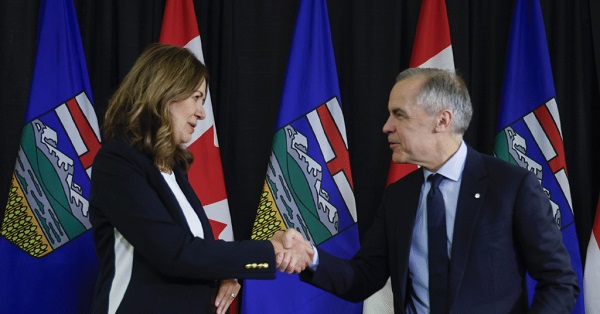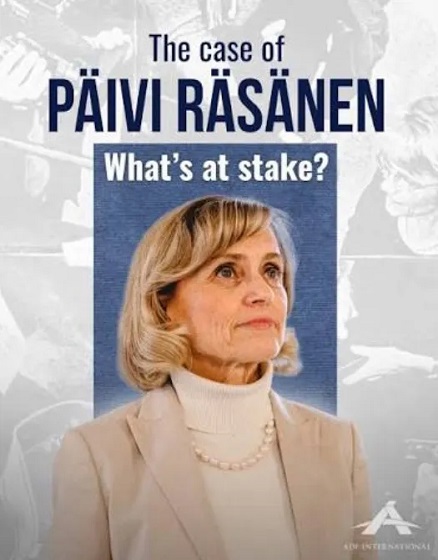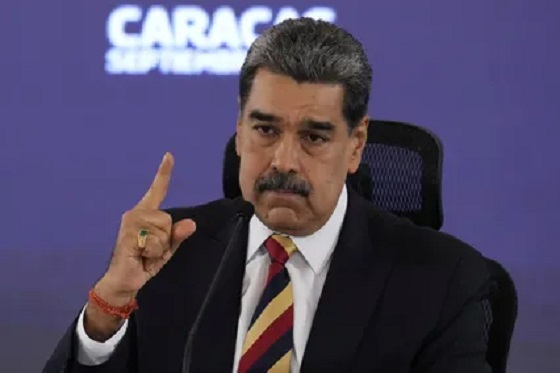Brownstone Institute
Why is Everyone Concerned About the WHO?

From the Brownstone Institute
BY
Over the past two years you’ve probably heard about the attempted WHO power grab. Here’s everything you need to know to understand the status today:
Overview:
- The build-out of a massive and expensive global biosecurity system is underway, allegedly to improve our preparedness for future pandemics or biological terrorism. In aid of this agenda two documents are being prepared through the WHO: a broad series of amendments to the existing International Health Regulations (2005) (IHR) and a proposed, entirely new pandemic treaty.
- A Pandemic Fund a.k.a. financial intermediary fund to aid preparedness worldwide has been established by the World Bank and WHO.
- Multiple names have been used for the new treaty as new drafts are produced, such as: Pandemic Treaty, WHO CA+, Bureau Text, Pandemic Accord, and Pandemic Agreement.
- Negotiations for these documents are being held in secret. The latest available draft of the IHR amendments is from February 6th, 2023.
- The latest Pandemic Treaty draft is from October 30th, 2023.
- Both the amendments and treaty are on a deadline to be considered for adoption at the 77th annual World Health Assembly meeting in May 2024.
- WHO’s principal attorney Steven Solomon has announced that he crafted a legal fig leaf to avoid making the draft amendments public by January 2024, as required by the WHO Constitution.
How Would these Drafts Become International Law?
- A treaty requires a two-thirds vote of the World Health Assembly’s 194 member states to be adopted and is binding only for States that have ratified or accepted it (Article 19 and 20, WHO Constitution). However, it could be enacted into force in the US by a simple signature, without Senate ratification. [See CRS report, “US proposals to Amend the International Health Regulations.”]
- The IHRs and any amendments thereto are adopted by simple majority, and become binding to all WHO Member States, unless a state has rejected or made reservations to them within predefined timeframes (Articles 21 and 22, WHO Constitution; Rule 72, Rules of procedures of the World Health Assembly).
- Last year, however, amendments to 5 articles of the IHRs were considered in opaque committee meetings during the 75th annual meeting, and then adopted by consensus without a formal vote. This process makes it harder to blame individual diplomats for their votes.
- The current draft of the IHR Amendments would allow the Director-General of WHO or Regional Directors to declare a Public Health Emergency of International Concern (PHEIC), or the potential for one, without meeting any specific criteria (Article 12). The WHO would then assume management of the PHEIC and issue binding directives to concerned States.
- PHEICS and potential PHEICs could be declared without the agreement of the concerned State or States.
- WHO’s unelected officials (Director-General, Regional Directors, technical staff) could dictate measures including quarantines, testing and vaccination requirements, lockdowns, border closures, etc.
- WHO officials would not be accountable for their decisions and have diplomatic immunity.

What are Some Specific Problems with the WHO’s Proposed Amendments?
- Article 3 of the proposed IHR amendments removes protections for human rights:
- Struck from the IHR is the crucial guarantee of human rights as a foundation of public health: “The implementation of these Regulations shall be
with full respect for the dignity, human rights and fundamental freedoms of persons…” - This has been replaced with the following legally meaningless phrase: “based on the principles of equity, inclusivity, coherence…”
- Struck from the IHR is the crucial guarantee of human rights as a foundation of public health: “The implementation of these Regulations shall be
- Proposed article 43.4 of the IHR notes that the WHO could ban the use of certain medications or other measures during a pandemic, since its ‘recommendations’ would be binding:
- “WHO shall make recommendations to the State Party concerned to modify or rescind the application of the additional health measures in case of finding such measures as disproportionate or excessive. The Director General shall convene an Emergency Committee for the purposes of this paragraph.”
- States’ obligations in the proposed IHR Amendments would include:
- Conducting extensive biological surveillance of microorganisms and people (Article 5);
- Monitoring mainstream and social media and to censor “false and unreliable information” regarding WHO-designated public health threats (Article 44.1(h)(new));
- Taking medical supplies from one State for use by other States as determined by the WHO (New Article 13A);
- Giving up intellectual property for use by other States or third parties (New Article 13A);
- Transferring genetic sequence data for “pathogens capable of causing pandemics and epidemics or other high-risk situations” to other Nations or third parties, despite the risks this entails (Article 44.1(f) (new)).
What are Problems with the Proposed Pandemic Treaty?
All the Pandemic Treaty drafts (as well as the proposed Amendments to the IHR) produced so far are based on a set of false assumptions. These include the following:
- The WHO Constitution states that, “The WHO is the directing and coordinating authority on international health work.” Recently, to justify becoming the global director of health, the WHO disingenuously dropped the last word–and began claiming it already was “the directing and coordinating authority on international health.” But it is not and never has been. The WHO has always been an advisory body, responding to requests for help from member states. It has never previously been a directing or governing body with authority to govern member states. Here is the relevant part of its Constitution, on page 2:

- The WHO claims that “international spread of disease demands the widest international cooperation,” which ignores the fact that international spread may be quite limited and able to be managed by local or national authorities; ignores that the most appropriate responses will be determined by the specific circumstances, and not by a WHO algorithm; and ignores that the WHO has limited infectious disease expertise relative to large nation states.
- The claim made by WHO is that nations will be able to retain national sovereignty through their ability to pass and enforce health laws, while they will simultaneously be bound and accountable to obey the directives from the WHO on health. This is contradictory and designed to confuse: if the WHO can impose its public health decisions on member states, it and not the states will have sovereignty over health.
- The tremendous cost and suffering from COVID are being blamed on lack of preparedness. However, the US was spending about $10 billion yearly on pandemic preparedness before the pandemic. Yet we had few masks, gloves, gowns, drugs, etc. when the pandemic struck. Why would we expect a central WHO authority, which relies on vested interests for 85 percent of its funding, to do any better?

- The claim is that lack of equity led to failure to share drugs, vaccines, and personal protective equipment (PPE)–ignoring the fact that no nation had sufficient PPE or tests early in the pandemic, and that it was nations withholding generic drugs from their populations that caused important treatment shortages. Furthermore, now that we know the COVID vaccines result in negative efficacy several months post-vaccination (making recipients more susceptible to developing COVID), it is apparent that nations that were last in line for COVID vaccines and whose populations are mostly unvaccinated have fared better overall than those who received vaccines for their populations. The so-called lack of equity was fortuitous for them!
- The claim is that pandemics invariably arise at the animal-human interface and that they are natural in origin. Neither is true for COVID or monkeypox, the last two declared public health emergencies of international concern, which came from laboratories.
- The claim is that the vaguely defined “One Health approach” can prevent or detect pandemics and ameliorate them. Yet it remains unclear what this strategy is, and there is no evidence to support the claim that One Health offers any public health advantages whatsoever.
- The claim is that increasing the capture and study of “potential pandemic pathogens” will be accomplished safely and yield useful pandemic products, when neither is true. The CDC’s Select Agent Program receives 200 reports yearly of accidents, losses or thefts of potential pandemic pathogens from high containment labs within the United States: 4 reports (and 4 potential pandemics) per week! And this is only within the US.
- Drafts of the treaty and amendments assume that pharmaceutical manufacturers will agree to give up certain intellectual property rights. In fact, neither developing nations nor pharmaceutical manufacturers are happy with the recent treaty proposal on intellectual property.
- The claim is that the UN adopted a Declaration on pandemic preparedness supporting the WHO plan on September 20, 2023. In fact, 11 countries rejected the Declaration procedure and it was only signed by the UN General Assembly president, representing himself and not the UN General Assembly.
- The claim is that the WHO has the legal right to require nations to censor “infodemics” and only allow the WHO’s public health narratives to be shared, yet this violates our First Amendment’s freedom of speech.
- The claim is that health “coverage” (insurance) will automatically provide the world’s citizens access to a broad range of health care, while the primary reason for lack of access to healthcare is the lack of practitioners and facilities, not lack of “coverage.”
Here are some Specific Examples of What is Wrong with the Treaty:
Article 3, #2. Sovereignty
“States have, in accordance with the charter of the United Nations and the general principles of international law, the sovereign right to legislate and to implement legislation in pursuance of their health policies.”
This language fails to address the issue of the WHO assuming sovereignty for health matters over states through this treaty. It is a disingenuous attempt to grab sovereignty while claiming otherwise.
Article 3, #3. Equity
“Equity includes the unhindered, fair, equitable and timely access to safe, effective, quality and affordable pandemic – related products and services, information, pandemic – related technologies and social protection.”
However, Article 9, #2 (d) states that parties shall promote “infodemic management,” and infodemic is defined in Article 1(c) as false or misleading information. Article 18, #1 instructs the Parties to “combat false, misleading, misinformation or disinformation…” In earlier drafts the WHO spelled out that only the WHO’s public health narrative would be allowed to spread.
Article 4, #3. Pandemic Prevention and Public Health Surveillance
“The Parties shall cooperate with the support of the WHO Secretariat to strengthen and maintain public health laboratory and diagnostic capacities, especially with respect to the capacity to perform genetic sequencing, data science to assess the risk of detected pathogens and to safely handle samples containing pathogens and the use of related digital tools.”
While this section omits incentivizing Gain-of-Function laboratory research (which was included in the earlier Bureau draft) it does direct nations to perform genetic sequencing of potential pandemic pathogens (i.e., biological warfare agents) they find and to safely handle them, which requires high containment (BSL3/4) laboratories. Also in Article 4 is the need to “develop, strengthen and maintain the capacity to (i) detect, identify and characterize pathogens presenting significant risks…” indicating the directive for nations to perform surveillance to seek out such pathogens and study them.
Article 6, #4. Preparedness, Readiness, and Resilience
“The Parties shall establish, building on existing arrangements as appropriate, genomics, risk assessment, and laboratory networks in order to conduct surveillance and sharing of emerging pathogens with pandemic potential, with such sharing pursuant to the terms and modalities established in Article 12.” Article 1 (h) defined ‘ “pathogen with pandemic potential” as any pathogen that has been identified to infect humans and that is potentially highly transmissible and capable of wide, uncontrollable spread in human populations and highly virulent, making it likely to cause significant morbidity and/or mortality in humans.”
Why does the WHO require nations to go out and find potential pandemic pathogens (a.k.a. biological warfare agents) and supply both biologic samples and pathogens’ genetic sequences to the WHO, where they will be shared with pharmaceutical companies, research centers and academic institutions, as well as possible others? They are also to share the genetic sequences online, where hackers could obtain the sequences and produce biological warfare agents. Yet this behavior is prohibited by Security Council Resolution 1540.
Article 8, #3. Preparedness Monitoring and Functional Reviews
“The parties shall, building on existing tools, develop and implement an inclusive, transparent, effective and efficient pandemic prevention, preparedness and response monitoring and evaluation system.”
Yet 4 different monitoring systems (“tools”–see graphic below) have been used to gauge nations’ readiness for pandemics and all 4 failed to predict how well they would do when COVID appeared. There is no acknowledgement of the failures of our assessment tools, nor discussion of whether there exist any useful assessment tools. And this begs the question why, if our means of assessing progress against pandemics failed, do we think that similar efforts are likely to be successful in future?

Article 10, #1 (d). Sustainable Production
“The Parties encourage entities, including manufacturers within their respective jurisdictions, in particular those that receive significant public financing, to grant, subject to any existing licensing restrictions, on mutually agreed terms, non-exclusive royalty-free licenses to any manufacturers, particularly from developing countries, to use their intellectual property and other protected substances, products, technology, know-how, information and knowledge used in the process of pandemic – related product development and production, in particular for pre-pandemic and pandemic diagnostics, vaccines and therapeutics for use in agreed developing countries.”
This and related sections are probably what make the pharma organization so upset with the current Treaty draft.
Article 12, #4 (a) i (2) Access and Benefit-Sharing
“Upload the genetic sequence of such WHO PABS (Pathogen Access and Benefits System) material to one or more publicly accessible databases of its choice, provided that the database has put in place an appropriate arrangement with respect to WHO PABS material.”
The treaty requires the sharing of pathogens and the need to identify and upload their genetic sequences online, where they will be accessible. This could also be called proliferation of biological weapons agents, which is generally considered a crime. In the US, “Select Agents” are those designated to have pandemic potential, and the select agent program is managed by CDC and USDA. For safety, CDC must give permission to transfer select agents. Yet the select agent rules are ignored in this WHO Treaty, which demands transfer of agents that could cause a worldwide pandemic. And in an apparent effort to handwave over existing rules, the draft states in Article 12, #8.
“The Parties shall ensure that such a system is consistent with, supportive of, and does not run counter to, the objectives of the Convention on Biological Diversity and the Nagoya Protocol thereto. The WHO PABS system will provide certainty and legal clarity to the providers and users of WHO PABS materials.”
Article 13, #3 (e). Global Supply Chain and Logistics (SCL)
“The terms of the WHO SCL Network shall include: facilitating the negotiation and agreement of advance purchase commitments and procurement contracts for pandemic-related products.”
Advance purchase commitments are contracts that obligate nations to buy products for pandemics in advance, sight unseen. Neither the manufacturer nor the state party knows what is coming, but once WHO issues a pandemic declaration, the contracts are activated and the US government will have to buy what the manufacturer produces. The 2009 swine flu pandemic provides a useful example. Advance purchase commitments led to tens of billions in vaccine purchases in North America and Europe for a flu that was less severe than normal. The GSK Pandemrix brand of vaccine led to over 1,300 cases of severe narcolepsy, primarily in adolescents. Rapid production of vaccines for which profits are guaranteed and liability is waived has never once been a win for the consumer.
Article 14. Regulatory Strengthening
Nations are to harmonize their regulatory requirements, expedite approvals and authorizations and ensure that legal frameworks are in place to support emergency approvals. This incentivizes a race to the bottom for drug and vaccine approval standards, particularly during emergencies.
Republished from the author’s Substack
Further Reading:
The WHO’s Proposed Treaty Will Increase Man-Made Pandemics, by Meryl Nass M.D.
What Can Countries Do Right Now to Slow Down the WHO? (PDF Download)
Collected IHR Amendment Drafts
Collected Pandemic Treaty Drafts
Brownstone Institute
The Unmasking of Vaccine Science

From the Brownstone Institute
By
I recently purchased Aaron Siri’s new book Vaccines, Amen. As I flipped though the pages, I noticed a section devoted to his now-famous deposition of Dr Stanley Plotkin, the “godfather” of vaccines.
I’d seen viral clips circulating on social media, but I had never taken the time to read the full transcript — until now.
Siri’s interrogation was methodical and unflinching…a masterclass in extracting uncomfortable truths.
A Legal Showdown
In January 2018, Dr Stanley Plotkin, a towering figure in immunology and co-developer of the rubella vaccine, was deposed under oath in Pennsylvania by attorney Aaron Siri.
The case stemmed from a custody dispute in Michigan, where divorced parents disagreed over whether their daughter should be vaccinated. Plotkin had agreed to testify in support of vaccination on behalf of the father.
What followed over the next nine hours, captured in a 400-page transcript, was extraordinary.
Plotkin’s testimony revealed ethical blind spots, scientific hubris, and a troubling indifference to vaccine safety data.
He mocked religious objectors, defended experiments on mentally disabled children, and dismissed glaring weaknesses in vaccine surveillance systems.
A System Built on Conflicts
From the outset, Plotkin admitted to a web of industry entanglements.
He confirmed receiving payments from Merck, Sanofi, GSK, Pfizer, and several biotech firms. These were not occasional consultancies but long-standing financial relationships with the very manufacturers of the vaccines he promoted.
Plotkin appeared taken aback when Siri questioned his financial windfall from royalties on products like RotaTeq, and expressed surprise at the “tone” of the deposition.
Siri pressed on: “You didn’t anticipate that your financial dealings with those companies would be relevant?”
Plotkin replied: “I guess, no, I did not perceive that that was relevant to my opinion as to whether a child should receive vaccines.”
The man entrusted with shaping national vaccine policy had a direct financial stake in its expansion, yet he brushed it aside as irrelevant.
Contempt for Religious Dissent
Siri questioned Plotkin on his past statements, including one in which he described vaccine critics as “religious zealots who believe that the will of God includes death and disease.”
Siri asked whether he stood by that statement. Plotkin replied emphatically, “I absolutely do.”
Plotkin was not interested in ethical pluralism or accommodating divergent moral frameworks. For him, public health was a war, and religious objectors were the enemy.
He also admitted to using human foetal cells in vaccine production — specifically WI-38, a cell line derived from an aborted foetus at three months’ gestation.
Siri asked if Plotkin had authored papers involving dozens of abortions for tissue collection. Plotkin shrugged: “I don’t remember the exact number…but quite a few.”
Plotkin regarded this as a scientific necessity, though for many people — including Catholics and Orthodox Jews — it remains a profound moral concern.
Rather than acknowledging such sensitivities, Plotkin dismissed them outright, rejecting the idea that faith-based values should influence public health policy.
That kind of absolutism, where scientific aims override moral boundaries, has since drawn criticism from ethicists and public health leaders alike.
As NIH director Jay Bhattacharya later observed during his 2025 Senate confirmation hearing, such absolutism erodes trust.
“In public health, we need to make sure the products of science are ethically acceptable to everybody,” he said. “Having alternatives that are not ethically conflicted with foetal cell lines is not just an ethical issue — it’s a public health issue.”
Safety Assumed, Not Proven
When the discussion turned to safety, Siri asked, “Are you aware of any study that compares vaccinated children to completely unvaccinated children?”
Plotkin replied that he was “not aware of well-controlled studies.”
Asked why no placebo-controlled trials had been conducted on routine childhood vaccines such as hepatitis B, Plotkin said such trials would be “ethically difficult.”
That rationale, Siri noted, creates a scientific blind spot. If trials are deemed too unethical to conduct, then gold-standard safety data — the kind required for other pharmaceuticals — simply do not exist for the full childhood vaccine schedule.
Siri pointed to one example: Merck’s hepatitis B vaccine, administered to newborns. The company had only monitored participants for adverse events for five days after injection.
Plotkin didn’t dispute it. “Five days is certainly short for follow-up,” he admitted, but claimed that “most serious events” would occur within that time frame.
Siri challenged the idea that such a narrow window could capture meaningful safety data — especially when autoimmune or neurodevelopmental effects could take weeks or months to emerge.
Siri pushed on. He asked Plotkin if the DTaP and Tdap vaccines — for diphtheria, tetanus and pertussis — could cause autism.
“I feel confident they do not,” Plotkin replied.
But when shown the Institute of Medicine’s 2011 report, which found the evidence “inadequate to accept or reject” a causal link between DTaP and autism, Plotkin countered, “Yes, but the point is that there were no studies showing that it does cause autism.”
In that moment, Plotkin embraced a fallacy: treating the absence of evidence as evidence of absence.
“You’re making assumptions, Dr Plotkin,” Siri challenged. “It would be a bit premature to make the unequivocal, sweeping statement that vaccines do not cause autism, correct?”
Plotkin relented. “As a scientist, I would say that I do not have evidence one way or the other.”
The MMR
The deposition also exposed the fragile foundations of the measles, mumps, and rubella (MMR) vaccine.
When Siri asked for evidence of randomised, placebo-controlled trials conducted before MMR’s licensing, Plotkin pushed back: “To say that it hasn’t been tested is absolute nonsense,” he said, claiming it had been studied “extensively.”
Pressed to cite a specific trial, Plotkin couldn’t name one. Instead, he gestured to his own 1,800-page textbook: “You can find them in this book, if you wish.”
Siri replied that he wanted an actual peer-reviewed study, not a reference to Plotkin’s own book. “So you’re not willing to provide them?” he asked. “You want us to just take your word for it?”
Plotkin became visibly frustrated.
Eventually, he conceded there wasn’t a single randomised, placebo-controlled trial. “I don’t remember there being a control group for the studies, I’m recalling,” he said.
The exchange foreshadowed a broader shift in public discourse, highlighting long-standing concerns that some combination vaccines were effectively grandfathered into the schedule without adequate safety testing.
In September this year, President Trump called for the MMR vaccine to be broken up into three separate injections.
The proposal echoed a view that Andrew Wakefield had voiced decades earlier — namely, that combining all three viruses into a single shot might pose greater risk than spacing them out.
Wakefield was vilified and struck from the medical register. But now, that same question — once branded as dangerous misinformation — is set to be re-examined by the CDC’s new vaccine advisory committee, chaired by Martin Kulldorff.
The Aluminium Adjuvant Blind Spot
Siri next turned to aluminium adjuvants — the immune-activating agents used in many childhood vaccines.
When asked whether studies had compared animals injected with aluminium to those given saline, Plotkin conceded that research on their safety was limited.
Siri pressed further, asking if aluminium injected into the body could travel to the brain. Plotkin replied, “I have not seen such studies, no, or not read such studies.”
When presented with a series of papers showing that aluminium can migrate to the brain, Plotkin admitted he had not studied the issue himself, acknowledging that there were experiments “suggesting that that is possible.”
Asked whether aluminium might disrupt neurological development in children, Plotkin stated, “I’m not aware that there is evidence that aluminum disrupts the developmental processes in susceptible children.”
Taken together, these exchanges revealed a striking gap in the evidence base.
Compounds such as aluminium hydroxide and aluminium phosphate have been injected into babies for decades, yet no rigorous studies have ever evaluated their neurotoxicity against an inert placebo.
This issue returned to the spotlight in September 2025, when President Trump pledged to remove aluminium from vaccines, and world-leading researcher Dr Christopher Exley renewed calls for its complete reassessment.
A Broken Safety Net
Siri then turned to the reliability of the Vaccine Adverse Event Reporting System (VAERS) — the primary mechanism for collecting reports of vaccine-related injuries in the United States.
Did Plotkin believe most adverse events were captured in this database?
“I think…probably most are reported,” he replied.
But Siri showed him a government-commissioned study by Harvard Pilgrim, which found that fewer than 1% of vaccine adverse events are reported to VAERS.
“Yes,” Plotkin said, backtracking. “I don’t really put much faith into the VAERS system…”
Yet this is the same database officials routinely cite to claim that “vaccines are safe.”
Ironically, Plotkin himself recently co-authored a provocative editorial in the New England Journal of Medicine, conceding that vaccine safety monitoring remains grossly “inadequate.”
Experimenting on the Vulnerable
Perhaps the most chilling part of the deposition concerned Plotkin’s history of human experimentation.
“Have you ever used orphans to study an experimental vaccine?” Siri asked.
“Yes,” Plotkin replied.
“Have you ever used the mentally handicapped to study an experimental vaccine?” Siri asked.
“I don’t recollect…I wouldn’t deny that I may have done so,” Plotkin replied.
Siri cited a study conducted by Plotkin in which he had administered experimental rubella vaccines to institutionalised children who were “mentally retarded.”
Plotkin stated flippantly, “Okay well, in that case…that’s what I did.”
There was no apology, no sign of ethical reflection — just matter-of-fact acceptance.
Siri wasn’t done.
He asked if Plotkin had argued that it was better to test on those “who are human in form but not in social potential” rather than on healthy children.
Plotkin admitted to writing it.
Siri established that Plotkin had also conducted vaccine research on the babies of imprisoned mothers, and on colonised African populations.
Plotkin appeared to suggest that the scientific value of such studies outweighed the ethical lapses—an attitude that many would interpret as the classic ‘ends justify the means’ rationale.
But that logic fails the most basic test of informed consent. Siri asked whether consent had been obtained in these cases.
“I don’t remember…but I assume it was,” Plotkin said.
Assume?
This was post-Nuremberg research. And the leading vaccine developer in America couldn’t say for sure whether he had properly informed the people he experimented on.
In any other field of medicine, such lapses would be disqualifying.
A Casual Dismissal of Parental Rights
Plotkin’s indifference to experimenting on disabled children didn’t stop there.
Siri asked whether someone who declined a vaccine due to concerns about missing safety data should be labelled “anti-vax.”
Plotkin replied, “If they refused to be vaccinated themselves or refused to have their children vaccinated, I would call them an anti-vaccination person, yes.”
Plotkin was less concerned about adults making that choice for themselves, but he had no tolerance for parents making those choices for their own children.
“The situation for children is quite different,” said Plotkin, “because one is making a decision for somebody else and also making a decision that has important implications for public health.”
In Plotkin’s view, the state held greater authority than parents over a child’s medical decisions — even when the science was uncertain.
The Enabling of Figures Like Plotkin
The Plotkin deposition stands as a case study in how conflicts of interest, ideology, and deference to authority have corroded the scientific foundations of public health.
Plotkin is no fringe figure. He is celebrated, honoured, and revered. Yet he promotes vaccines that have never undergone true placebo-controlled testing, shrugs off the failures of post-market surveillance, and admits to experimenting on vulnerable populations.
This is not conjecture or conspiracy — it is sworn testimony from the man who helped build the modern vaccine program.
Now, as Health Secretary Robert F. Kennedy, Jr. reopens long-dismissed questions about aluminium adjuvants and the absence of long-term safety studies, Plotkin’s once-untouchable legacy is beginning to fray.
Republished from the author’s Substack
Brownstone Institute
Bizarre Decisions about Nicotine Pouches Lead to the Wrong Products on Shelves

From the Brownstone Institute
A walk through a dozen convenience stores in Montgomery County, Pennsylvania, says a lot about how US nicotine policy actually works. Only about one in eight nicotine-pouch products for sale is legal. The rest are unauthorized—but they’re not all the same. Some are brightly branded, with uncertain ingredients, not approved by any Western regulator, and clearly aimed at impulse buyers. Others—like Sweden’s NOAT—are the opposite: muted, well-made, adult-oriented, and already approved for sale in Europe.
Yet in the United States, NOAT has been told to stop selling. In September 2025, the Food and Drug Administration (FDA) issued the company a warning letter for offering nicotine pouches without marketing authorization. That might make sense if the products were dangerous, but they appear to be among the safest on the market: mild flavors, low nicotine levels, and recyclable paper packaging. In Europe, regulators consider them acceptable. In America, they’re banned. The decision looks, at best, strange—and possibly arbitrary.
What the Market Shows
My October 2025 audit was straightforward. I visited twelve stores and recorded every distinct pouch product visible for sale at the counter. If the item matched one of the twenty ZYN products that the FDA authorized in January, it was counted as legal. Everything else was counted as illegal.
Two of the stores told me they had recently received FDA letters and had already removed most illegal stock. The other ten stores were still dominated by unauthorized products—more than 93 percent of what was on display. Across all twelve locations, about 12 percent of products were legal ZYN, and about 88 percent were not.
The illegal share wasn’t uniform. Many of the unauthorized products were clearly high-nicotine imports with flashy names like Loop, Velo, and Zimo. These products may be fine, but some are probably high in contaminants, and a few often with very high nicotine levels. Others were subdued, plainly meant for adult users. NOAT was a good example of that second group: simple packaging, oat-based filler, restrained flavoring, and branding that makes no effort to look “cool.” It’s the kind of product any regulator serious about harm reduction would welcome.
Enforcement Works
To the FDA’s credit, enforcement does make a difference. The two stores that received official letters quickly pulled their illegal stock. That mirrors the agency’s broader efforts this year: new import alerts to detain unauthorized tobacco products at the border (see also Import Alert 98-06), and hundreds of warning letters to retailers, importers, and distributors.
But effective enforcement can’t solve a supply problem. The list of legal nicotine-pouch products is still extremely short—only a narrow range of ZYN items. Adults who want more variety, or stores that want to meet that demand, inevitably turn to gray-market suppliers. The more limited the legal catalog, the more the illegal market thrives.
Why the NOAT Decision Appears Bizarre
The FDA’s own actions make the situation hard to explain. In January 2025, it authorized twenty ZYN products after finding that they contained far fewer harmful chemicals than cigarettes and could help adult smokers switch. That was progress. But nine months later, the FDA has approved nothing else—while sending a warning letter to NOAT, arguably the least youth-oriented pouch line in the world.
The outcome is bad for legal sellers and public health. ZYN is legal; a handful of clearly risky, high-nicotine imports continue to circulate; and a mild, adult-market brand that meets European safety and labeling rules is banned. Officially, NOAT’s problem is procedural—it lacks a marketing order. But in practical terms, the FDA is punishing the very design choices it claims to value: simplicity, low appeal to minors, and clean ingredients.
This approach also ignores the differences in actual risk. Studies consistently show that nicotine pouches have far fewer toxins than cigarettes and far less variability than many vapes. The biggest pouch concerns are uneven nicotine levels and occasional traces of tobacco-specific nitrosamines, depending on manufacturing quality. The serious contamination issues—heavy metals and inconsistent dosage—belong mostly to disposable vapes, particularly the flood of unregulated imports from China. Treating all “unauthorized” products as equally bad blurs those distinctions and undermines proportional enforcement.
A Better Balance: Enforce Upstream, Widen the Legal Path
My small Montgomery County survey suggests a simple formula for improvement.
First, keep enforcement targeted and focused on suppliers, not just clerks. Warning letters clearly change behavior at the store level, but the biggest impact will come from auditing distributors and importers, and stopping bad shipments before they reach retail shelves.
Second, make compliance easy. A single-page list of authorized nicotine-pouch products—currently the twenty approved ZYN items—should be posted in every store and attached to distributor invoices. Point-of-sale systems can block barcodes for anything not on the list, and retailers could affirm, once a year, that they stock only approved items.
Third, widen the legal lane. The FDA launched a pilot program in September 2025 to speed review of new pouch applications. That program should spell out exactly what evidence is needed—chemical data, toxicology, nicotine release rates, and behavioral studies—and make timely decisions. If products like NOAT meet those standards, they should be authorized quickly. Legal competition among adult-oriented brands will crowd out the sketchy imports far faster than enforcement alone.
The Bottom Line
Enforcement matters, and the data show it works—where it happens. But the legal market is too narrow to protect consumers or encourage innovation. The current regime leaves a few ZYN products as lonely legal islands in a sea of gray-market pouches that range from sensible to reckless.
The FDA’s treatment of NOAT stands out as a case study in inconsistency: a quiet, adult-focused brand approved in Europe yet effectively banned in the US, while flashier and riskier options continue to slip through. That’s not a public-health victory; it’s a missed opportunity.
If the goal is to help adult smokers move to lower-risk products while keeping youth use low, the path forward is clear: enforce smartly, make compliance easy, and give good products a fair shot. Right now, we’re doing the first part well—but failing at the second and third. It’s time to fix that.
-

 Health2 days ago
Health2 days agoFDA warns ‘breast binder’ manufacturers to stop marketing to gender-confused girls
-

 Daily Caller2 days ago
Daily Caller2 days agoTrump Reportedly Escalates Pressure On Venezuela With Another Oil Tanker Seizure
-

 International17 hours ago
International17 hours agoAustralian PM booed at Bondi vigil as crowd screams “shame!”
-

 Business1 day ago
Business1 day agoThere’s No Bias at CBC News, You Say? Well, OK…
-

 Uncategorized17 hours ago
Uncategorized17 hours agoMortgaging Canada’s energy future — the hidden costs of the Carney-Smith pipeline deal
-

 Business2 days ago
Business2 days agoTaxing food is like slapping a surcharge on hunger. It needs to end
-

 Health2 days ago
Health2 days agoAll 12 Vaccinated vs. Unvaccinated Studies Found the Same Thing: Unvaccinated Children Are Far Healthier
-

 Opinion1 day ago
Opinion1 day agoReligion on trial: what could happen if Canada passes its new hate speech legislation








